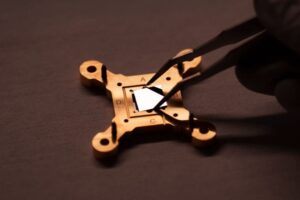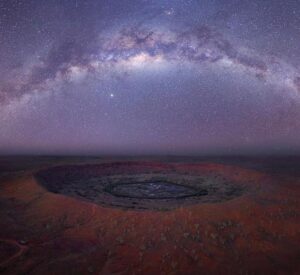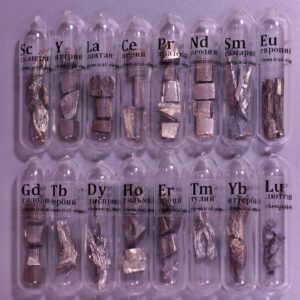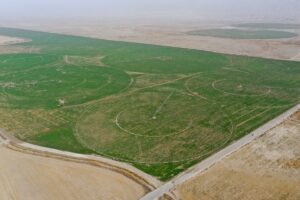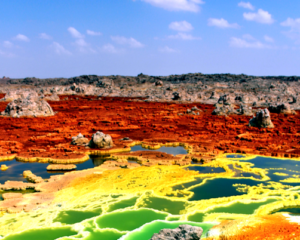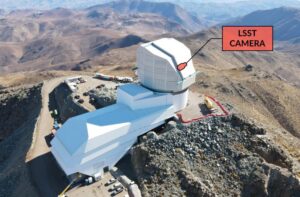The International Space Station (ISS) is more than just a marvel of engineering; it’s a floating laboratory that has facilitated numerous scientific breakthroughs. Orbiting approximately 400 kilometers (250 miles) above Earth, the ISS provides a unique microgravity environment, enabling research that isn’t possible on our planet. Here are some of the most notable scientific breakthroughs achieved on the ISS.
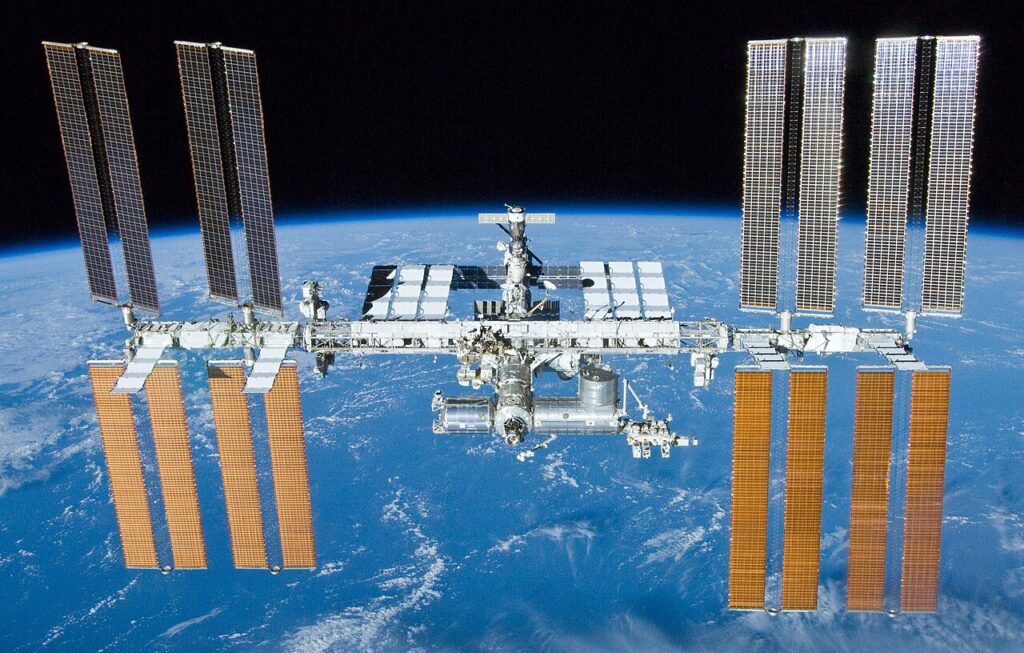 Pin
Pin Image from Wikimedia Commons (NASA)
Table of Contents
1. Advancements in Medical Research
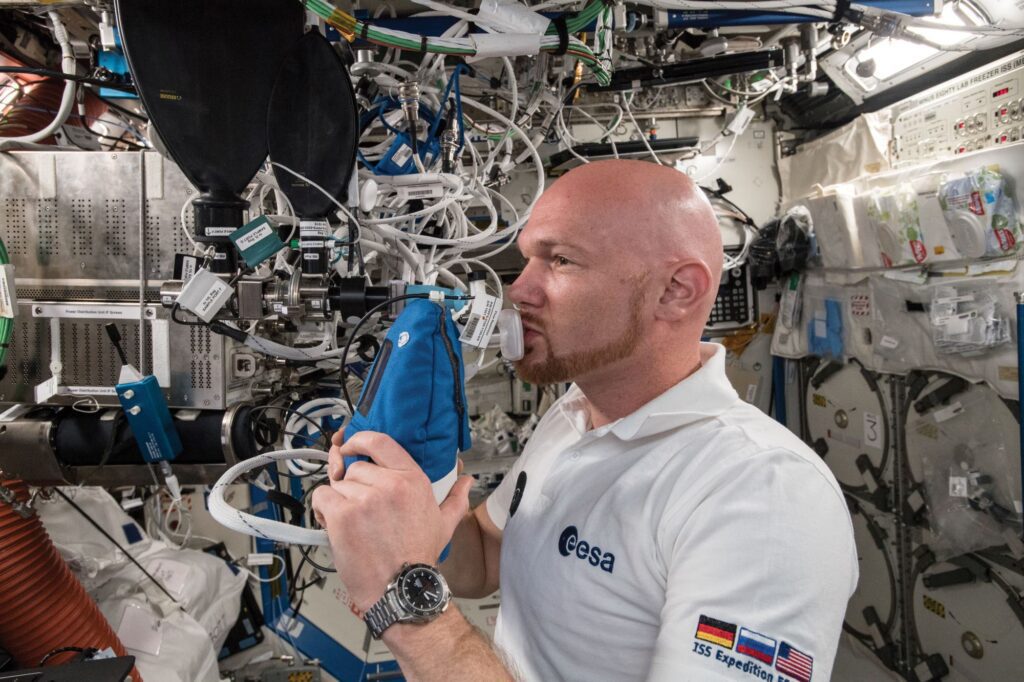 Pin
Pin ESA astronaut Alexander Gerst breathes into an analyzer as part of the Airway Monitoring experiment, which examines inflammation in the airways of crew members. This research aims to enhance crew safety during extended missions to the Moon, Mars, and beyond, and could also lead to improved treatments for asthma and other inflammatory airway conditions on Earth.
Image Source: NASA
The International Space Station (ISS) has become a floating laboratory where groundbreaking medical research can take place in ways that are impossible on Earth. The unique microgravity conditions aboard the ISS have allowed scientists to delve into medical phenomena with unprecedented precision and clarity.
One of the most significant areas of medical research on the ISS involves osteoporosis, a condition characterized by the weakening of bones. In the microgravity environment, astronauts experience bone density loss at a much faster rate than on Earth. This accelerated process provides a unique opportunity to study the mechanisms behind bone loss and test potential treatments. By understanding how bones deteriorate in space, researchers have gained insights that can lead to more effective treatments for osteoporosis, benefiting millions of people on Earth who suffer from this condition.
Similarly, muscle atrophy, or the wasting away of muscle tissue, is another area of intense study. In the absence of gravity, astronauts’ muscles weaken rapidly, mirroring the process of muscle-wasting diseases. Experiments conducted on the ISS have helped scientists understand the biochemical and physiological changes that occur in muscle tissue in microgravity. These insights are crucial for developing therapies for conditions such as muscular dystrophy and age-related muscle loss, ultimately improving the quality of life for many individuals.
2. Protein Crystal Growth
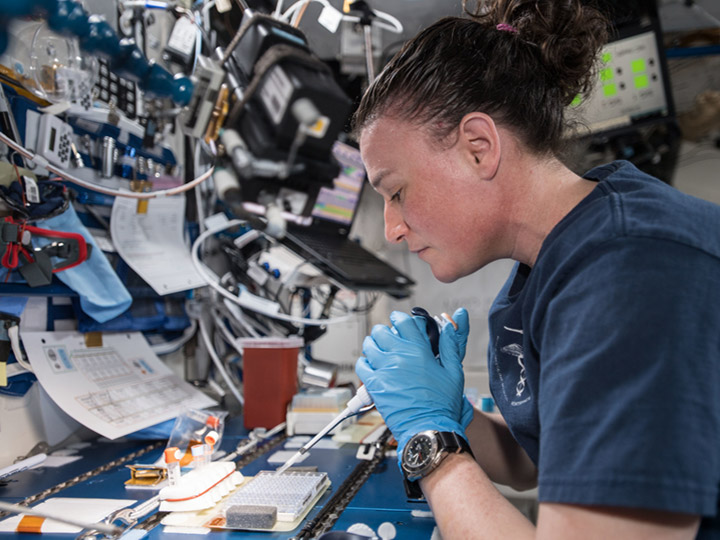 Pin
Pin NASA astronaut Serena Auñón-Chancellor prepares protein crystal samples aboard the ISS. The BioServe Protein Crystallography-1 experiment aims to show that protein crystals can be grown in real time on the space station. Crew members add solutions to the equipment, monitor the formation of crystals, and make adjustments for subsequent experiments.
Image Credit: NASA
The ISS has also been instrumental in advancing the study of protein crystal growth, a field with profound implications for drug development. On Earth, gravity interferes with the formation of large, well-ordered protein crystals, which are essential for detailed structural analysis. In the microgravity environment of the ISS, these crystals can grow more slowly and perfectly, providing clearer insights into their structure.
By studying protein crystals grown in space, researchers can better understand the molecular structures of proteins associated with various diseases, including cancer, Alzheimer’s, and Parkinson’s. This information is critical for designing targeted drugs that can interact with these proteins more effectively. For example, the improved crystallization of proteins related to cancer has enabled scientists to develop more precise therapies that can target cancer cells without affecting healthy tissues.
The ability to grow high-quality protein crystals on the ISS has far-reaching implications. Not only does it accelerate the drug development process, but it also opens new avenues for treating diseases that have eluded effective treatment thus far. The research conducted on the ISS in this field exemplifies how space science can have a direct and meaningful impact on human health.
3. Understanding Fluid Dynamics
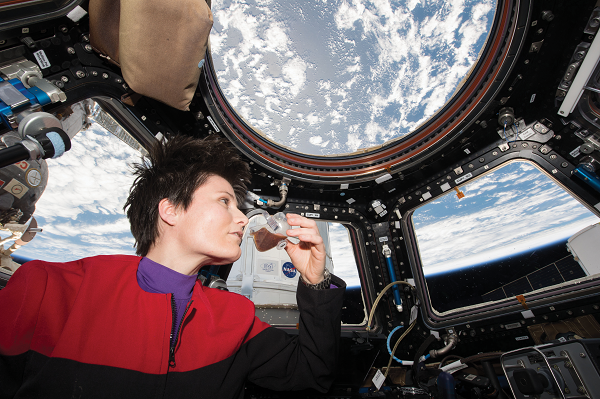 Pin
Pin ESA astronaut Samantha Cristoforetti, dressed in a Star Trek Voyager uniform, sips espresso from the Capillary Beverage experiment, or Space Cup, while gazing out the cupola window of the space station.
Image Credit: NASA
One of the most intriguing aspects of research conducted on the International Space Station (ISS) involves fluid dynamics. The absence of gravity in space creates a unique environment where fluids behave in ways that are vastly different from how they act on Earth. These experiments have provided profound insights that have wide-ranging applications across various industries.
On Earth, gravity influences fluid behavior by dictating how liquids settle and flow. In microgravity, however, these influences are negligible, allowing scientists to observe the intrinsic properties of fluids without the interference of gravity. This environment enables the study of phenomena like capillary action, surface tension, and fluid mixing with unprecedented clarity.
One practical application of this research is in the field of oil recovery. Understanding how fluids move and interact in microgravity helps engineers design more efficient methods for extracting oil and other resources from underground reservoirs. Enhanced oil recovery techniques can benefit from these findings, leading to increased yields and more sustainable extraction processes.
In manufacturing, the insights gained from fluid dynamics research on the ISS contribute to the development of new materials and processes. For example, the precise control of fluid mixing and solidification in microgravity can lead to the creation of materials with unique properties that are not achievable on Earth. This has potential applications in producing advanced composites, metals, and polymers with superior strength and durability.
Capillary action, the ability of a liquid to flow in narrow spaces without the assistance of external forces, is another area of study. Understanding this phenomenon in microgravity is crucial for designing efficient fluid systems in space. These insights are vital for developing life support systems, fuel transfer mechanisms, and other technologies essential for long-duration space missions.
4. Combustion and Fire Safety
 Pin
Pin NASA astronaut Kate Rubins operates the Combustion Integrated Rack on the space station.
Image Credit: NASA
Combustion research on the ISS has yielded transformative insights into how flames behave in microgravity. These studies have far-reaching implications for fire safety, both in space and on Earth, as well as for the development of more efficient combustion engines.
In the microgravity environment of the ISS, flames exhibit distinct behaviors compared to those on Earth. For example, flames tend to form spherical shapes due to the absence of buoyant convection, which normally causes hot gases to rise and cooler air to descend. This unique behavior allows scientists to study combustion processes in a simplified manner, free from the complexities introduced by gravity.
The insights gained from combustion studies in microgravity have led to the development of enhanced fire safety measures for spacecraft. Understanding how flames propagate and extinguish in space is critical for designing effective fire suppression systems. These advancements help ensure the safety of astronauts and the integrity of spacecraft in the event of a fire.
The knowledge gleaned from space-based combustion research also benefits fire safety on Earth. By studying how different materials burn and extinguish in microgravity, scientists can improve fire retardants and suppression techniques, leading to safer buildings and environments.
Microgravity combustion research has also contributed to the development of more efficient combustion engines. By examining the fundamental processes of fuel combustion in a controlled environment, engineers can optimize engine designs to achieve better fuel efficiency and lower emissions. These advancements have significant implications for reducing the environmental impact of transportation and industrial processes.
5. Cancer Research
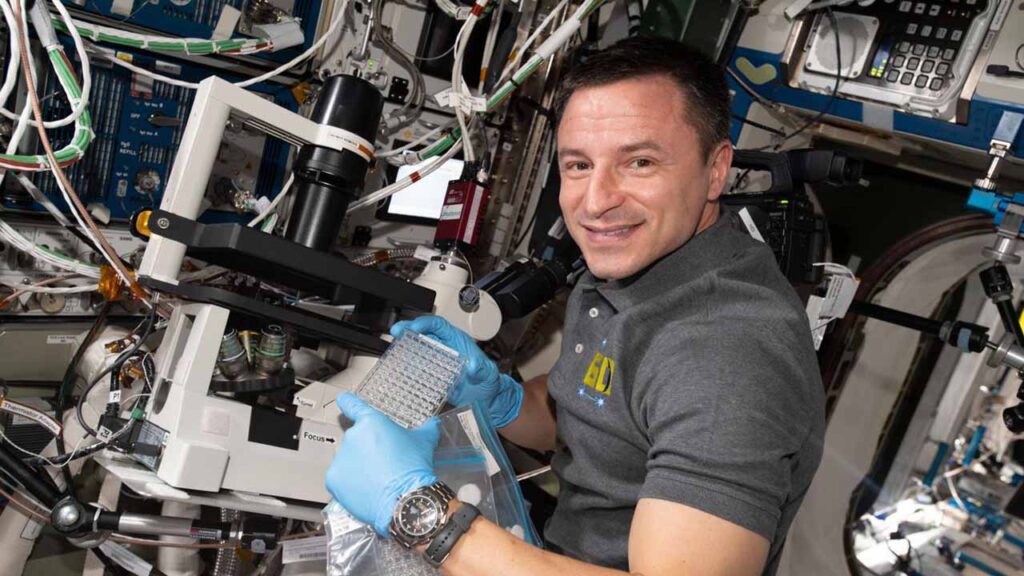 Pin
Pin Expedition 60 Flight Engineer Andrew Morgan from NASA carries out research for the Microgravity Crystals investigation, which works to crystallize a membrane protein crucial to tumor growth and cancer survival. The findings could contribute to developing cancer treatments that target this protein more precisely and with fewer side effects. Morgan is shown arranging protein crystal samples for observation and photography under a microscope. These samples were later stored in a specialized incubator known as the Space Automated Bioproduct Laboratory.
Image Source: NASA
The International Space Station (ISS) has become an invaluable platform for groundbreaking cancer research. The microgravity environment aboard the ISS offers a unique setting to study how cancer cells grow, spread, and respond to various treatments, providing insights that are difficult to achieve on Earth.
In microgravity, cancer cells exhibit behaviors that are not typically observed under Earth’s gravity. These conditions allow scientists to study the growth patterns and gene expressions of cancer cells in a more natural, three-dimensional state. This research has led to a deeper understanding of how tumors develop, migrate, and invade healthy tissues. For instance, studies have shown that in microgravity, cancer cells often form spheroid structures, which closely resemble how tumors grow in the human body. This insight is crucial for developing more accurate models for cancer research and treatment testing.
The ISS has also facilitated the development of new cancer therapies. By observing the effects of microgravity on cancer cells, researchers can identify potential targets for treatment. For example, experiments have shown that microgravity can affect the expression of certain proteins involved in cancer cell survival and proliferation. These findings have paved the way for novel therapeutic approaches that aim to inhibit these proteins, thereby slowing down or stopping the growth of cancer cells.
The ISS allows for the testing of new drugs in a controlled environment, free from the variables that might affect results on Earth. This capability accelerates the process of drug development, potentially bringing effective cancer treatments to patients faster.
6. Astrobiology and Life Sciences
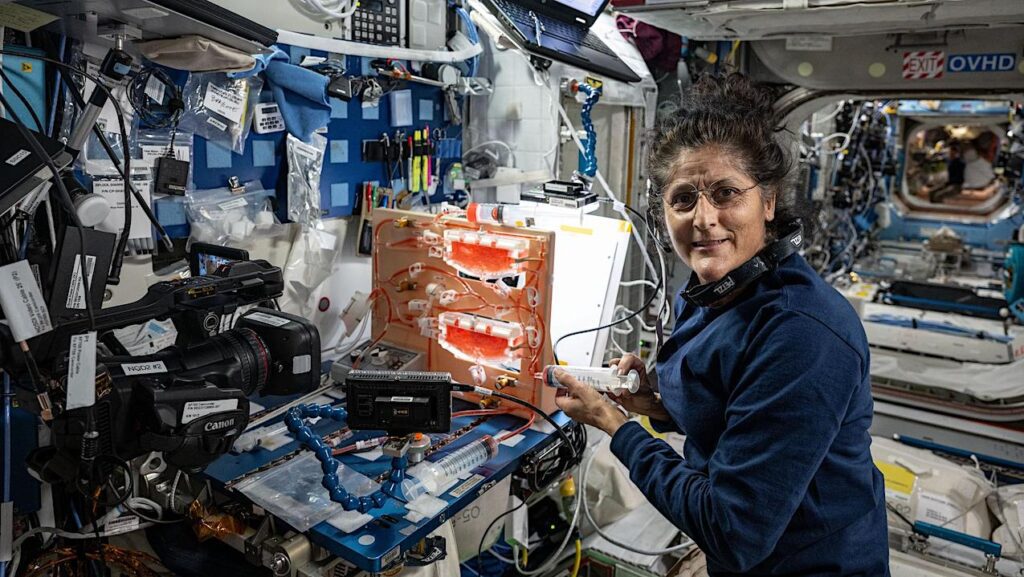 Pin
Pin NASA astronaut and Boeing Crew Flight Test Pilot Suni Williams explores fluid physics methods, including surface tension, along with hydroponics and air circulation techniques.
Image Source: NASA
Astrobiology, the study of life beyond Earth, has been a central focus of research on the ISS. The space station provides an unparalleled environment to investigate how living organisms respond to the extreme conditions of space, offering critical insights into the possibilities of life elsewhere in the universe and the challenges of long-term human space exploration.
One significant area of study involves extremophiles, organisms that thrive in extreme environments. Experiments on the ISS have exposed these hardy organisms to the harsh conditions of space, including microgravity, radiation, and vacuum. The results have shown that some extremophiles can survive and even flourish in space, suggesting that life might exist in similarly extreme environments on other planets and moons.
Research on the ISS also examines the effects of long-term space travel on human health. Astronauts aboard the station provide a unique opportunity to study the physiological and psychological impacts of living in microgravity for extended periods. These studies are crucial for preparing for future missions to Mars and beyond, where astronauts will spend months or even years in space.
For example, research has shown that microgravity can lead to muscle atrophy, bone density loss, and changes in vision. Understanding these effects helps scientists develop countermeasures, such as specific exercise regimens and dietary adjustments, to mitigate the adverse impacts on astronauts’ health.
Astrobiology experiments on the ISS also explore the potential for life beyond Earth. By studying how microorganisms and plants grow and adapt in space, researchers can assess the feasibility of sustaining life on other planets. These studies are essential for developing life support systems for future space habitats and ensuring the success of long-duration space missions.
7. Earth and Climate Science
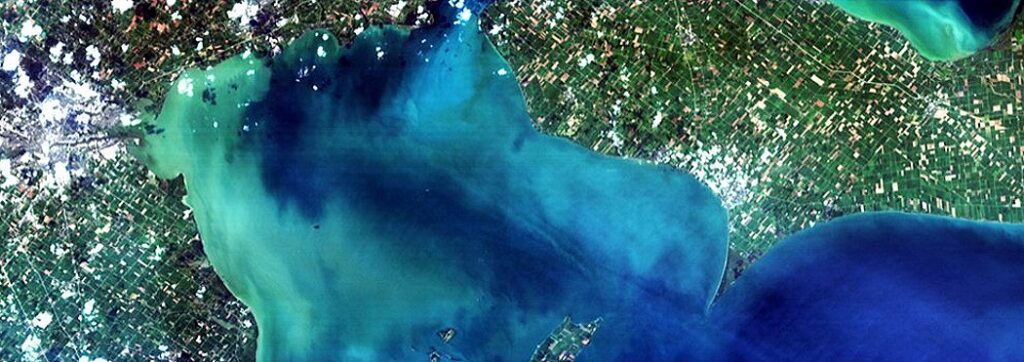 Pin
Pin An image of western Lake Erie captured by the Hyperspectral Imager for the Coastal Ocean (HICO) from the International Space Station on August 15, 2014.
Image Credit: HICO Team/Naval Research Laboratory
Astronauts aboard the International Space Station (ISS) have a unique vantage point for observing our planet. This bird’s-eye view allows them to gather high-resolution images and valuable data that contribute significantly to our understanding of Earth and its climate. The contributions from these observations have been transformative in several key areas.
The ISS orbits the Earth approximately every 90 minutes, providing near-continuous coverage of the planet’s surface. This allows astronauts and onboard instruments to capture real-time images and data of natural disasters, such as hurricanes, wildfires, floods, and volcanic eruptions. These observations are crucial for disaster response and management. High-resolution imagery helps track the progression of these events, providing critical information to emergency responders and helping to save lives.
The ability to monitor long-term environmental changes from space is invaluable for climate science. The ISS contributes to this by collecting data on various aspects of the Earth’s climate system, including sea level rise, deforestation, glacial melting, and changes in ocean currents. Instruments aboard the ISS measure atmospheric carbon dioxide levels and other greenhouse gases, offering insights into the drivers of climate change. By tracking these changes over time, scientists can improve climate models and predict future climate scenarios with greater accuracy.
The ISS provides a platform for studying the composition and dynamics of Earth’s atmosphere. Instruments aboard the station measure atmospheric chemistry, including ozone levels and pollutants, helping to understand their impact on climate and human health. The ISS also enables the study of phenomena such as the auroras and lightning, offering insights into the interactions between the Earth’s atmosphere and space weather.
8. Technological Innovations
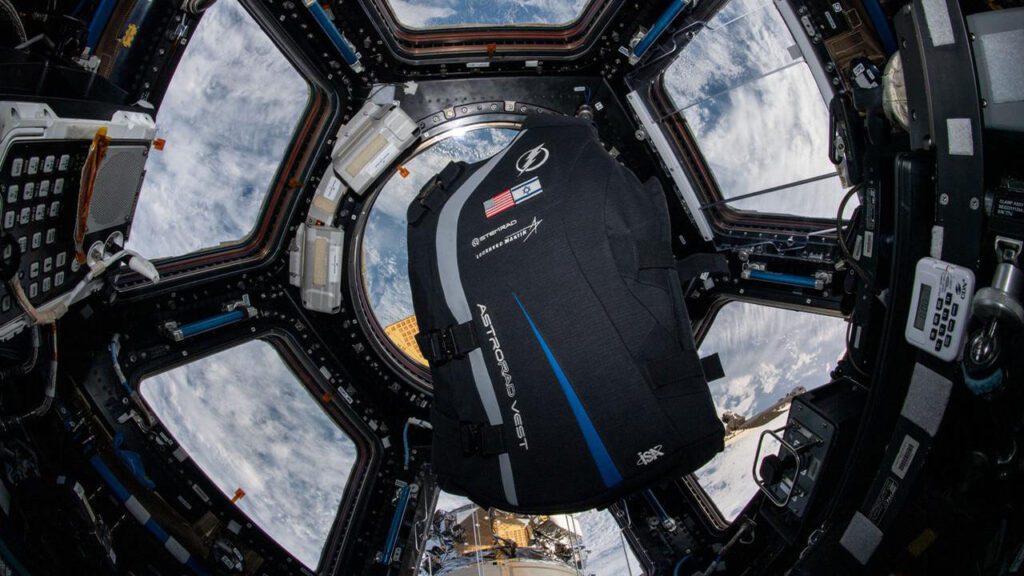 Pin
Pin Image Source: NASA
The International Space Station serves as a testbed for new technologies that have far-reaching applications, both in space and on Earth. The development and testing of these technologies on the ISS have led to significant advancements in several fields.
One of the key areas of technological innovation on the ISS is robotics. The station is equipped with advanced robotic systems, such as the Canadarm2, which are used for various tasks, including assembling the station, conducting repairs, and capturing visiting spacecraft. These robotic systems have been pivotal in the development of autonomous and remote-controlled robots. The advancements made on the ISS have applications in industries such as manufacturing, where precision and automation are critical, and in hazardous environments, such as disaster sites, where human presence is risky.
The ISS has also contributed to advancements in satellite technology. Experiments conducted aboard the station have helped refine satellite communication and navigation systems. The testing of new materials and components in the space environment has led to the development of more durable and efficient satellites. These innovations improve the reliability and performance of satellites used for communication, weather forecasting, and Earth observation.
The microgravity environment of the ISS allows scientists to study materials without the influence of gravity, leading to the development of new materials with unique properties. For example, research on the ISS has led to advancements in the production of high-performance alloys and the development of novel materials with superior strength, thermal resistance, and electrical conductivity. These materials have applications in various industries, including aerospace, automotive, and electronics.
The technologies developed and tested on the ISS are essential for future space exploration missions. For instance, advancements in life support systems, radiation shielding, and habitat modules are critical for long-duration missions to the Moon, Mars, and beyond. The ISS serves as a proving ground for these technologies, ensuring they are reliable and effective before being deployed on more ambitious missions.
9. Human Physiology and Psychology
 Pin
Pin Canadian Space Agency (CSA) astronaut Bob Thirsk assists his crewmate, ESA astronaut Frank De Winne, with the ESA Neurospat experiment. This study monitored astronaut brain activity to evaluate the effects of long-duration microgravity on three-dimensional navigation and visual perception skills.
Credits: NASA
The International Space Station (ISS) offers an unparalleled environment to study the effects of long-duration space missions on human physiology and psychology. Living in space for extended periods exposes astronauts to unique challenges, providing valuable data to develop effective countermeasures that are critical for future deep space exploration.
In the microgravity environment of space, the human body undergoes significant changes. Muscles weaken, bones lose density, and fluids shift towards the upper body, affecting cardiovascular function. Research on the ISS has provided critical insights into these physiological changes. For example, studies have shown that astronauts can lose up to 1% of bone density per month, similar to the effects of osteoporosis on Earth. Understanding these changes helps scientists develop countermeasures, such as resistance exercise routines and nutritional strategies, to mitigate bone and muscle loss.
Space radiation poses a significant risk to astronauts. The ISS’s unique location allows for the study of radiation’s impact on the human body. This research is essential for developing protective measures, such as advanced shielding materials and pharmaceuticals, to safeguard astronauts on long-term missions to the Moon, Mars, and beyond.
Long-duration space missions also impact mental health. Astronauts experience isolation, confinement, and separation from loved ones, which can lead to psychological stress. The ISS serves as a laboratory for studying these effects and developing coping strategies. Research has highlighted the importance of structured schedules, regular communication with family, and leisure activities to maintain mental well-being. These insights are crucial for preparing astronauts for the psychological demands of future deep space missions, where they will be isolated for extended periods.
The knowledge gained from ISS research has led to several effective countermeasures. Physical exercise programs, personalized dietary plans, and advanced monitoring systems help maintain astronauts’ health. Moreover, the implementation of psychological support systems, such as virtual reality environments and counseling, ensures astronauts are mentally prepared for the challenges of space travel.
10. Microbial Research
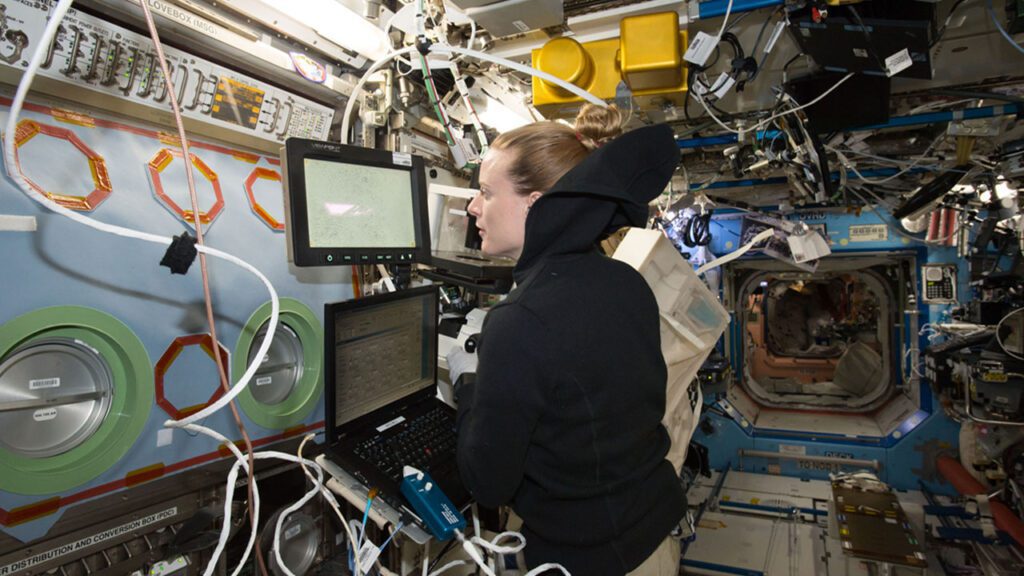 Pin
Pin NASA astronaut Kate Rubins studies heart cells aboard the ISS for the investigation on the Effects of Microgravity on Stem Cell-Derived Heart Cells.
Image Credit: NASA
The ISS provides a unique setting to study the behavior of microbes in space. The absence of gravity, along with exposure to cosmic radiation, creates conditions that significantly differ from those on Earth. This research is essential for ensuring the safety of astronauts and has broader applications in developing new antibiotics and disinfectants.
Microbes behave differently in space. Studies have shown that some bacteria can become more virulent in microgravity, posing a potential risk to astronauts. Understanding these changes helps scientists develop strategies to prevent infections during long-term missions. For instance, research on the ISS has identified specific genes and proteins that are activated in bacteria in response to microgravity, providing targets for new antimicrobial treatments.
Microbial research on the ISS also focuses on biofilm formation. Biofilms are colonies of bacteria that adhere to surfaces and are resistant to disinfectants. They can form on the ISS’s equipment and water systems, posing a threat to health and infrastructure. Studying biofilm formation in space helps researchers develop more effective cleaning and sterilization methods, ensuring the safety and hygiene of space habitats.
The insights gained from microbial research on the ISS have applications beyond space travel. The discovery of how bacteria adapt to the space environment has led to the development of new antibiotics and disinfectants. These advancements are crucial for addressing the growing issue of antibiotic resistance on Earth, providing tools to combat drug-resistant bacteria.
Microbial research on the ISS also has implications for astrobiology. Understanding how microbes survive and adapt in the harsh conditions of space informs the search for life beyond Earth. These studies help scientists develop methods for detecting and studying potential microbial life on other planets and moons.
Conclusion
The International Space Station continues to be a beacon of scientific discovery, contributing to advancements across multiple disciplines. The unique environment of the ISS enables research that would be impossible on Earth, leading to breakthroughs that benefit humanity. As we look to the future, the ISS will remain a critical platform for scientific innovation, paving the way for further exploration and understanding of our universe.















